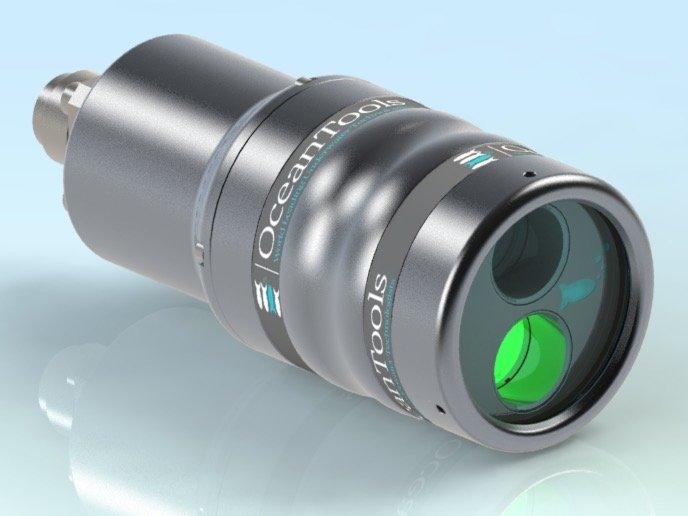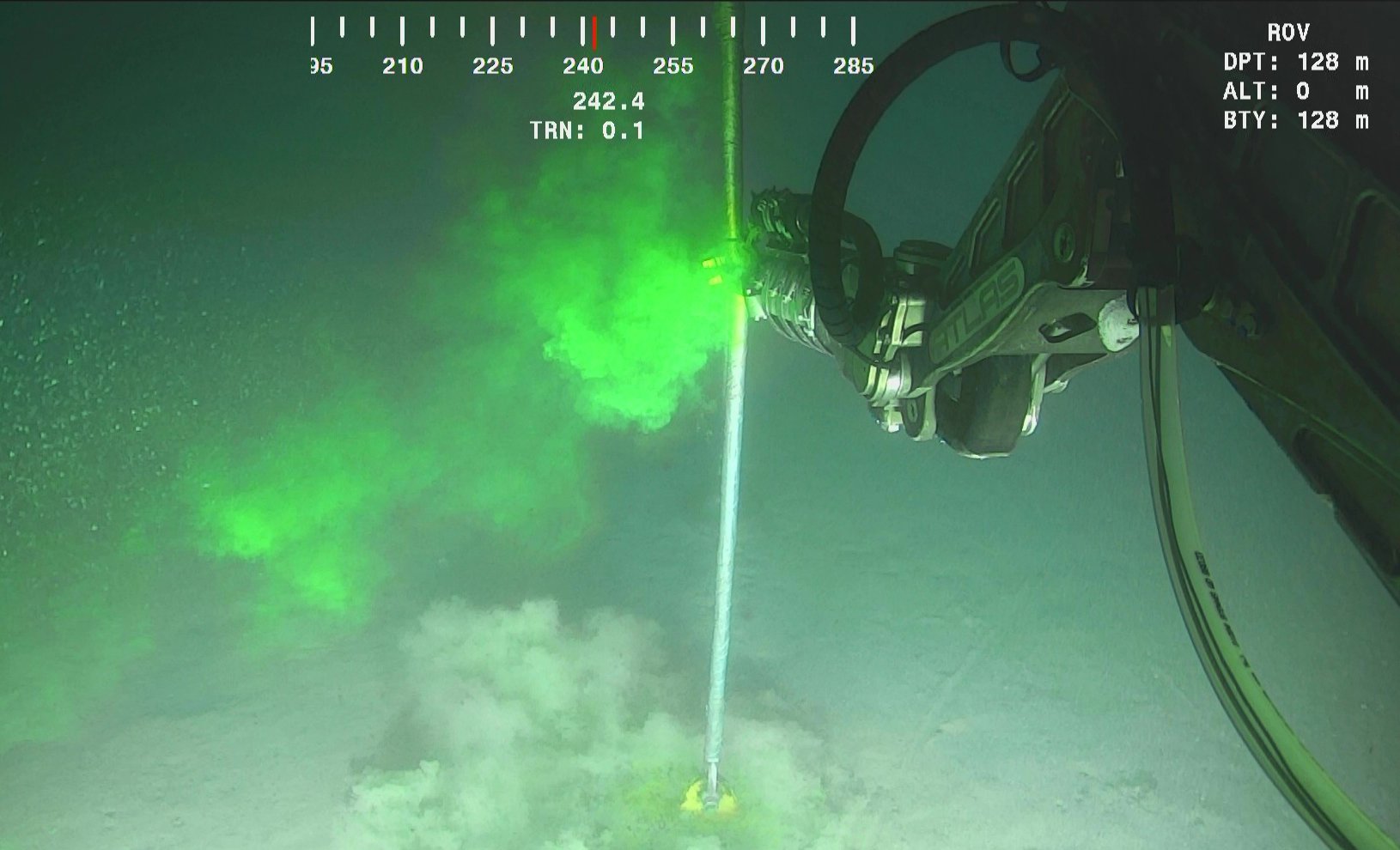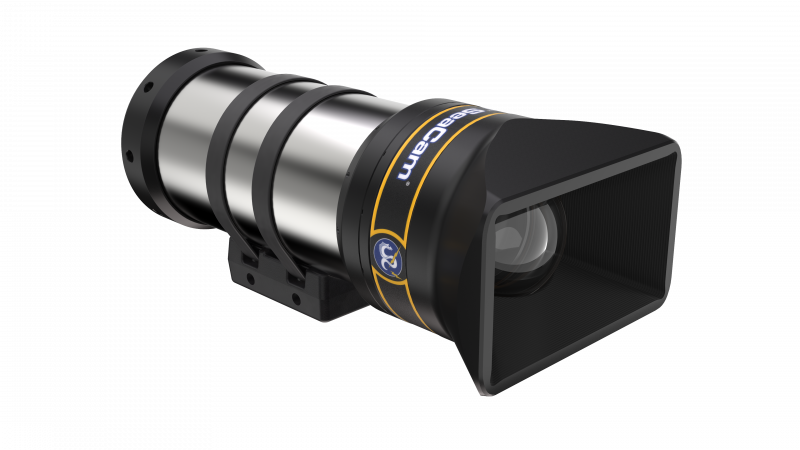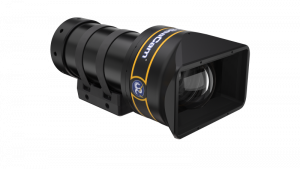BlueZone partners with over 50
world-leading original equipment
manufacturers and systems providers
D5 DyeTector
Mini subsea leak and dye detection system
The D5 DyeTector is an advanced ultra-compact subsea leak and dye detection system developed for installation on AUV systems or smaller observation class ROVs.
High-power LED light is focused through lenses and filters to create a concentrated beam that is tuned to a specific wavelength to cause maximum fluorescence of the dye. Detection electronics employ clever light amplification technology to amplify even the smallest amounts of fluorescence from the agitated dye molecules.
The powerful D5 DyeTector uses the same technology capable of detecting single photons of light as larger DyeTector units. This enables it to detect down to single digit parts per billion of dye dissolved in water and makes it ideal for detecting the very smallest of leaks or dye dosed cement. Advanced ambient light suppression technology allows the DyeTector to be used in high levels of background light.
The D5 DyeTector has been specifically designed for installation on AUV systems, with free-running data and low-power electronics to reflect the increasing use of AUVs for pipeline surveys. It can also be deployed on smaller observation class ROVs, with simple and intuitive DyeTection software to display detection data at the surface.
Key Features:
-
Rhodamine, Fluorescein or Ultraviolet dye detection
-
Compact design for AUVs or small ROVs
-
Same powerful DyeTector technology as larger units
-
Configurable serial control or free-running data output
-
1000m standard depth rating
Subsea infrastructure
A DyeTector may be used to detect leaks from subsea infrastructure such as manifolds, wellheads or pipelines if a suitable dye has been added to the infrastructure fluids. Pipeline or flow line pressure testing can be monitored by the DyeTector if dye impregnated fluids are used.
Cement detection
A DyeTector may also be used during casing cementing operations to detect cement returns if a tracer dye is added to either the seawater spacer or to the cement itself. Unlike pH meters which rely upon the cement passing over them, a DyeTector can detect cement from a distance of several meters depending on the concentration of dye.
Detection dyes
Versions of the DyeTector are designed to detect several types of dye or fluid in addition to C-Dye 530 (Rhodamine) and C-Dye 370 (Ultraviolet) including:
-
Rhodamine dyes such as B275, RX9022, Pelagic 100 Pink
-
Fluorescein dyes such as HW443, HW540P, Oceanic Yellow LTF
-
Ultraviolet dyes such as RX9026E, Pelagic 100, Champion Cleardye, Castrol HT2
List of Detectable Dyes and Fluids
For more information about OceanTools D5 DyeTector, Contact the team at BlueZone.
Key Features
Up to 25-hour mission duration
Speeds up to 4.2 knots
Increased module payload capacity
Search and recovery
Hydrography
Deep sea mineral exploration
Marine & Fisheries research
Product Enquiry
Related products
DeepSea's Optim SeaCam provides a unique tool for scientists, subsea explorers, and film makers combining superb 4K imaging capability with familiar controls, flexible integration options, and an extremely rugged design.
Read moreDeepSea's compact Vertex SeaCam has superior imaging performance with proprietary corrector optics. Features include full HD resolution with 10x optical zoom and low-distortion 80° HFOV at full-wide. A minimum faceplate...
Read moreSidus ‘ SS400 HD IP Network Color Camera is a lightweight, compact video camera. It employs a 600 TVL colour module that has a 1/3” Super HAD CCD imaging sensor...
Read moreRelated Articles
Ahead of the Tide: A Year of Milestones and Momentum- A Letter from the Director
By Neil Hodges, Managing Director, BlueZone Group As 2025 draws to a close, it’s a moment to reflect on a year that has been nothing short of transformative for...
Read MoreGlobal Journeys, Fresh Faces and Capability Growth That Sets the Stage for the Future For BlueZone Group, 2025 has been nothing short of transformative — a year defined by...
Read MoreSafer Summers: Innovation Beneath the Waves with ArtemisSAR and StarFish
The Advanced Sonar Systems Giving Surf Life Savers the Tools to Protect Lives with Greater Speed, Safety, and Confidence As we turn the page into Aussie summer, the rhythm...
Read More




